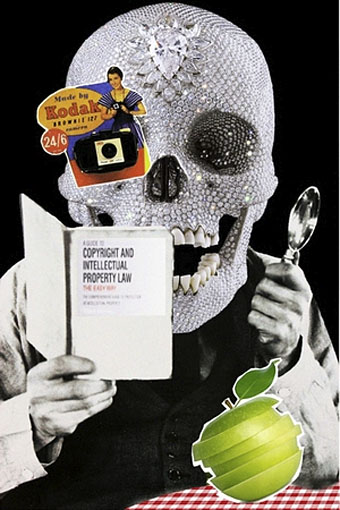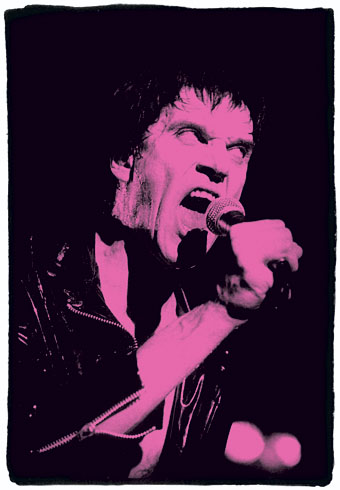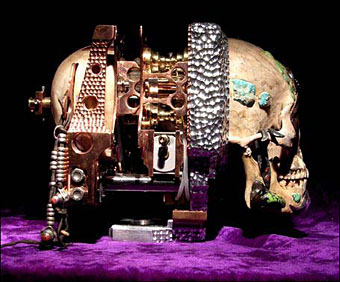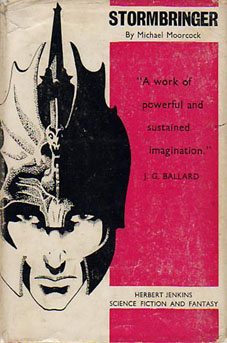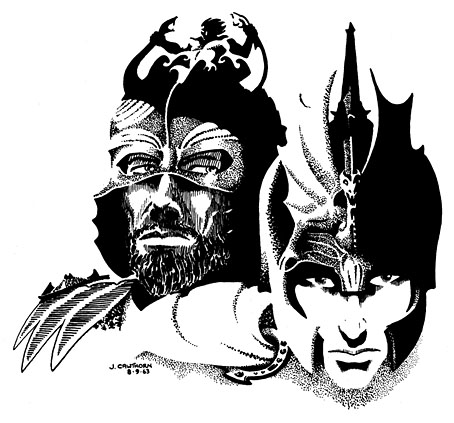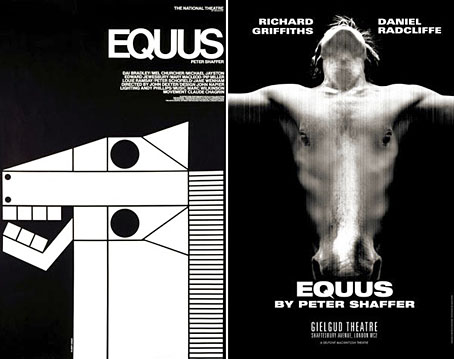For the Love of Disruptive Strategies and Utopian Visions in Contemporary Art and Culture No.2 by James Cauty.
I usually wouldn’t bother writing about the over-rated and over-valued Damien Hirst—I’ll leave that to heavyweights such as Robert Hughes—but one story this week toasted the cockles of my black and cynical heart. Before we get to that, some context is required.
Hirst unveiled his diamond-coated platinum skull, For the Love of God in June 2007. Later that month, artist John LeKay complained that Hirst swiped the idea from LeKay’s series of crystal skulls made in the early Nineties. Hirst certainly knew LeKay at that time and interviewed him for a gallery catalogue in 1993.
(LeKay) said: “I would like Damien to acknowledge that ‘John really did inspire the skull and influenced my work a lot’. Damien’s very insecure about his originality. He used to say, ‘You’re a better artist than me’.
“He can be affectionate and is fun to be around, but he struggles to come up with ideas. It takes years of work to develop something. My stuff with crystals took a lot of research. You don’t just get there. He’s impatient. He’s a lazy artist.”
This wasn’t the first time Hirst was accused of laziness or even plagiarism. In 2000 he was sued for breach of copyright by Norman Emms after he made Hymn, an over-sized copy of Emms’ model for the Young Scientist Anatomy Set. That dispute was settled out of court only to be followed in 2006 with an accusation of theft by computer artist Robert Dixon who claimed that his geometric model of a flower, True Daisy, had been copied by Hirst for a piece entitled Valium. Judge the similarity for yourself.
Fast forward to December 2008 when a teenage graffiti artist who calls himself Cartrain created a collage which includes a photo of Hirst’s skull. The £200 that sales of this netted him also drew the attention of the Design and Artists Copyright Society and Hirst himself who demanded both the money and the artwork. Cartrain said:
I handed over the artworks to Dacs on the advice of my gallery. I met Christian Zimmermann [from Dacs] who told me Hirst personally ordered action on the matter.
I think this is the point where one has to start using the word hypocrite, don’t you? Others think so too, among them Jimmy Cauty (ex-KLF) and Sex Pistols sleeve designer Jamie Reid whose website Red Rag To A Bull describes itself as “a radical institution dedicated to the pursuit of “FREEDOM, TRUTH and JUSTICE in the art world and BEYOND”. And also overblown statements.” Inspired by Cartrain’s treatment, Cauty and co have been producing their own riffs on Hirst’s skull as a deliberate act of provocation. Cauty says, “Unlike Cartrain and his gallery, we are not intimidated by lawyers and if an injunction is issued, we will simply ignore it on the grounds of freedom of speech.” Reid calls Hirst a “hypocritical and greedy art bully”. There’s some funny stuff on their site, all of which is for sale as limited edition prints.
All of the works below are for sale and once TWENTY MILLION POUNDS has been raised ALL the proceeds will go to make an exact copy of a sculpture known as “For the Love of God”. This will then be sold for FIFTY MILLION POUNDS and the THIRTY MILLION POUND profit will then be used to repay the Street Urchin his 200 quid, help other Street Urchins and also feed starving children in Africa and Sussex.
Hirst will no doubt be grudgingly amused by the attention even if it is for behaving more like a grasping corporation than an artist. He’s also become the subject of another artwork by Eugenio Merino, For the Love of Gold, which depicts the corporate entity inside one of his vitrine tanks shooting himself in the head. All of which is silly and juvenile but then the only response much contemporary art deserves is a silly and juvenile one. People are naturally tempted to wave a red rag in the face of the pompous or the hypocritical. More power to them.
Update: Damien Hirst in vicious feud with teenage artist over a box of pencils

